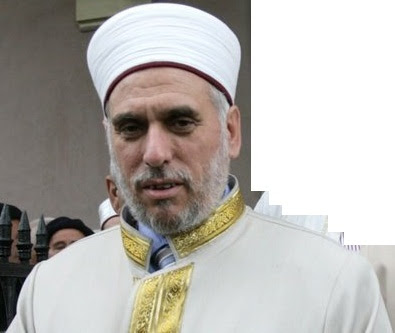| The rites of Hajj ! | ||||||
| | ||||||
| By Omar Chatriwala in Mecca
| ||||||
|
Millions of Muslims from around the world have gathered in the Saudi city of Mecca in anticipation of the start of Hajj - the annual Muslim pilgrimage that re-enacts the actions of the Prophet Muhammad 1,377 years ago. Taking part in the pilgrimage at least once in one's lifetime is a major obligation for all able-bodied Muslims of financial means, and between two and three million people participate in the six-day ritual every year. Hajj occurs in the 12th month of the Islamic lunar calendar, called Dhul-Hijjah, between the eighth and the 13th days of the month. While the specific rituals carried out by Muslims today date back to the Prophet Muhammad's "farewell pilgrimage" in 632 AD, travelling to Mecca was a sacred annual rite for Arabian tribes centuries before the advent of Islam. According to Islamic tradition, the Kaaba - a black silk-clad stone structure at the heart of the Grand Mosque in Mecca - was built by the Prophet Abraham in biblical times. Hajj is meant to be a commemoration of the trials Abraham was put through by God.
Hajj is, put simply, complex. There are several different ways of performing it, and numerous schools of Islamic thought, between which lie many scholarly differences.
The very first rite of Hajj is entering ihram - a pilgrim's sacred state - when crossing the outer boundaries of Mecca, called Miqat. Pilgrims have been arriving in Saudi Arabia for weeks in anticipation of this day. On the eigth of Dhul-Hijjah, pilgrims enter ihram, which entails wearing plain garments - two unstitched clothes for men, or any loose-fitting clothing for women - as well as following certain rules, including not hunting or engaging in sexual activity. They then set out from Mecca en masse to the sprawling tent-city of Mina, whether by foot along pilgrim paths, or by buses and cars. It is an 8km journey. The pilgrims will spend the day in Mina, only setting out the next morning at dawn.
The Day of Arafat is considered one of the most important days, not just of Hajj, but of the Islamic calendar. Mount Arafat was the scene of the Prophet Muhammad's final sermon, and after making the 14.4km journey from Mina, pilgrims spend the day here in reverent prayer. Elsewhere in the world, many Muslims choose to fast on this day. After sunset, its time to move again, this time to Muzdalifah - a 9km trip - where they spend the night under the stars. Many will also begin collecting pebbles here for tomorrow's rites, departing again just before sunrise.
The 10th of Dhul-Hijjah is Eid al-Adha, a day celebrated by Muslims around the world as the greater of the two Muslim holidays. For those performing Hajj, the day is know as Yamul Hajjil Akbar (The big Hajj day) and is probably the longest day of the pilgrimage, and the most dangerous. Pilgrims start the day in Muzdalifah and begin heading back to Mina before dawn. Once in Mina, they perform the first Ramy, throwing seven pebbles at the largest of three columns known as Jamarat. This act is a symoblic stoning of the devil, based on historic tradition. God told Abraham to sacrifice his son, the story goes, as proof of faith. It is believed that at this spot in Mina, the devil appeared and tried to dissuade Abraham from heeding the command. Abraham responded by throwing stones to scare him off. Millions of pilgrims converge at the Jamarat bridge, which houses the three columns representing the devil, in order to re-enact the story. After casting their stones, pilgrims must peform the sacrifice. Completing the story, when Abraham went to sacrifice his son, he found God had placed a ram there to be slaughtered instead. At this point, pilgrims trim or shave (men only) their hair and remove their ihram clothes. Many will then proceed to Mecca to perform Tawaf and Sa'ee, first circling the Kaaba seven times, then walking seven times between the hills of Safa and Marwa. When all is finally done, they return to their campsite in Mina.
With the hardest part behind them, pilgrims will now spend the next two or three days in Mina. On each day, they will again symbolically stone the devil - this time throwing seven pebbles at each of the three pillars. When their time in Mina is finished, pilgrims return to Mecca to perform the final circulation of the Kaaba, a "farewell" tawaf. Before heading home, many also go to Medina, the second holiest city in Islam, where the Prpophet Muhammad is buried along with his closest companions. Visiting Medina, however, is not a part of Hajj. |
Al Jazeera / Минаре България










Няма коментари:
Публикуване на коментар